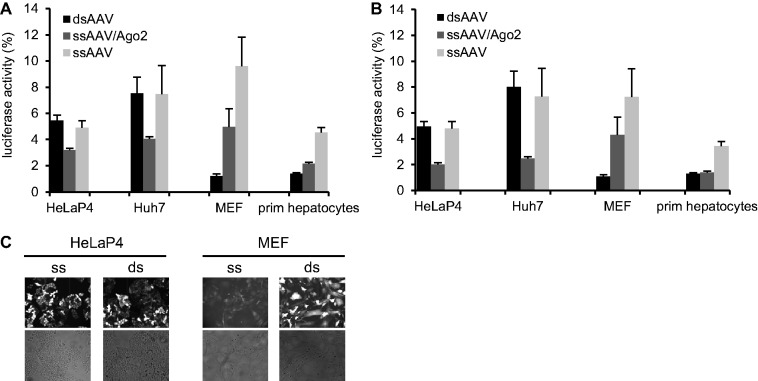Figure 6.
Ago2/shRNA co-expression from AAV vectors can improve RNAi in different mammalian cell types. (A and B) The indicated four cell types were infected with three different AAV vectors (expressing Ren3 shRNA) at MOIs (i.e. particles per cell) of 2.5 × 105 (A) or 5 × 105 (B). In addition, the cells were infected with an AAV vector encoding the same dual luciferase expression cassette used in all transfection-based experiments. Values were normalized to those with a control AAV expressing an irrelevant anti-hAAT shRNA. prim, primary. (C) The superior performance of the Ago2/shRNA-co-encoding ssAAV vector in HeLaP4 and Huh7 cells (medium gray bars in A and B) correlated well with the high infectability of these cells (depicted for the high MOI group and HeLaP4 as examples in C). Yfp/Gfp co-encoded on the vectors (the ssAAV variant co-expressed Yfp) is shown on top, corresponding transmission pictures are underneath. In contrast, primary cells (MEFs and primary hepatocytes) were only potently transduced by the dsAAV vector (A–C). Bars are means ± SD (n = 3).

